Bhutan is a land of breathtaking landscapes, rich culture, and serene spirituality. Among its many jewels, Punakha stands out as a must-visit destination for travelers seeking to immerse themselves in the essence of Bhutanese beauty and tradition. From majestic dzongs to pristine valleys, Punakha offers a tapestry of experiences that captivate the soul. In this travel guide, we embark on a journey through Punakha, unraveling its treasures and providing insights to make your visit an unforgettable adventure.
Getting There
By Air
To reach Punakha, Bhutan by air, you'll first need to fly into Paro International Airport, which is Bhutan's sole international airport. Here's a step-by-step guide:
- International Flight: Book a flight to Paro International Airport from your nearest international airport. Paro Airport serves flights from cities such as Bangkok, Delhi, Kathmandu, and Singapore.
- Arrival in Paro: Upon arrival at Paro Airport, you'll clear immigration and customs procedures. Make sure to have your passport, visa (if required), and other travel documents ready.
- Ground Transportation: From Paro Airport, Punakha is approximately a 4-hour drive away. You can arrange for transportation in advance through your tour operator or hotel. Taxis and private cars are available for hire.
- Traveling to Punakha: The journey from Paro to Punakha offers breathtaking views of Bhutan's landscape, including lush valleys and traditional villages. Enjoy the scenic drive as you make your way to Punakha.
- Arrival in Punakha: Once you arrive in Punakha, you can check into your accommodation and begin exploring the beautiful valley.
Remember to plan your flights and ground transportation in advance, especially during peak tourist seasons when availability may be limited. Additionally, make sure to check visa requirements and any travel advisories before your trip. Enjoy your journey to Punakha and soak in the unique charm of this picturesque destination!
By Road
Traveling to Punakha, Bhutan by road offers a scenic and adventurous journey through the picturesque landscapes of the Himalayan kingdom. Here's how you can reach Punakha by road:
- From Thimphu: Thimphu, the capital city of Bhutan, is about 77 kilometers (48 miles) away from Punakha. The road journey from Thimphu to Punakha takes around 2.5 to 3 hours, depending on road conditions and traffic. The route from Thimphu to Punakha offers stunning views of the mountains, valleys, and traditional Bhutanese villages.
- From Other Cities: Punakha is accessible by road from other major cities in Bhutan, such as Paro and Wangdue Phodrang. The road network in Bhutan is well-maintained but can be narrow and winding, especially in mountainous areas.
- Local Transportation: Within Punakha, taxis and hired cars are commonly used for transportation. You can also arrange for transportation through your hotel or tour operator. Public buses are available but may not be as frequent or convenient for tourists.
- Travel Tips: Plan your journey during the daytime to enjoy the scenic views along the way. Roads in Bhutan can be narrow and winding, so if you're prone to motion sickness, consider taking medication. During the monsoon season (June to August), be prepared for possible road closures or delays due to landslides or heavy rainfall.
- Travel Permits: Ensure you have the necessary permits before traveling to Punakha. Foreign tourists must book their trip through a licensed Bhutanese tour operator who will arrange the required permits.
- Enjoy the Journey: The road journey to Punakha offers breathtaking views of Bhutan's natural beauty, including lush forests, cascading waterfalls, and traditional villages. Take your time to soak in the serene atmosphere and make stops along the way to capture memorable moments.
Whether you're traveling from Thimphu or other cities in Bhutan, the road journey to Punakha promises to be an unforgettable experience filled with scenic vistas and cultural encounters.
Best Time to Visit
The best time to visit Punakha, Bhutan is during the spring and autumn months, which offer pleasant weather and clear skies, making it ideal for outdoor activities and sightseeing. Here's a breakdown of the best times to visit Punakha:
- Spring (March to May): Spring is one of the most beautiful times to visit Punakha, as the weather is mild, and the landscape comes alive with blooming flowers and lush greenery. Temperatures are comfortable, ranging from around 15°C to 25°C (59°F to 77°F) during the day. This season is perfect for trekking, hiking, and exploring the Punakha Valley and its surrounding areas.
- Autumn (September to November): Autumn is another excellent time to visit Punakha, characterized by clear skies, mild temperatures, and stunning views of the Himalayan peaks. Temperatures are pleasant, ranging from around 10°C to 20°C (50°F to 68°F) during the day. Autumn offers ideal conditions for outdoor activities such as rafting, kayaking, and visiting Punakha's cultural attractions.
- Other Considerations: Punakha experiences a monsoon season from June to August, characterized by heavy rainfall, which can lead to road closures and landslides. It's advisable to avoid visiting during this time. Winter (December to February) in Punakha can be cold, with temperatures dropping below freezing, especially at night. While the days may be sunny, be prepared for chilly temperatures if you visit during this season.
Overall, spring and autumn are the best times to visit Punakha, offering pleasant weather, clear skies, and opportunities for outdoor adventures and cultural experiences. Be sure to plan your trip accordingly and check for any festivals or events happening during your visit for a truly memorable experience in Punakha, Bhutan.
Places To Visit
Punakha Dzong

Punakha Dzong, also known as Pungtang Dechen Phodrang Dzong, stands as a majestic symbol of Bhutanese architecture and history. Located at the confluence of the Mo Chhu and Pho Chhu rivers, this fortress-monastery boasts stunning traditional Bhutanese design, with intricate artwork adorning its walls and courtyards. As one of Bhutan's most significant cultural landmarks, Punakha Dzong served as the seat of the government until the capital was relocated to Thimphu in the 1950s. Steeped in religious and historical significance, the dzong continues to host important ceremonies and festivals, attracting visitors from around the world who come to marvel at its beauty and immerse themselves in Bhutan's rich cultural heritage.
Chimi Lhakhang
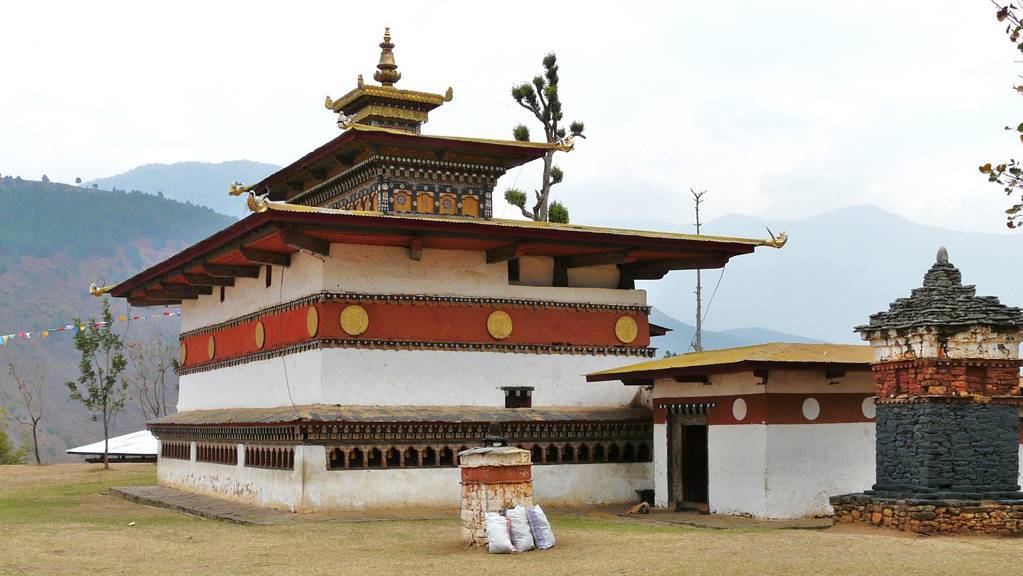
Chimi Lhakhang, affectionately known as the "Fertility Temple," is a quaint and charming Bhutanese temple dedicated to Drukpa Kunley, the Divine Madman. Nestled amidst lush greenery in the Punakha Valley, this sacred site is renowned for its unique phallic symbols and colorful murals. Pilgrims and visitors flock to Chimi Lhakhang seeking blessings for fertility, childbirth, and good fortune. The temple's serene atmosphere and picturesque surroundings make it a popular destination for spiritual seekers and cultural enthusiasts alike, offering a glimpse into Bhutan's vibrant religious traditions and folklore.
Sangchhen Dorji Lhuendrup Lhakhang Nunnery
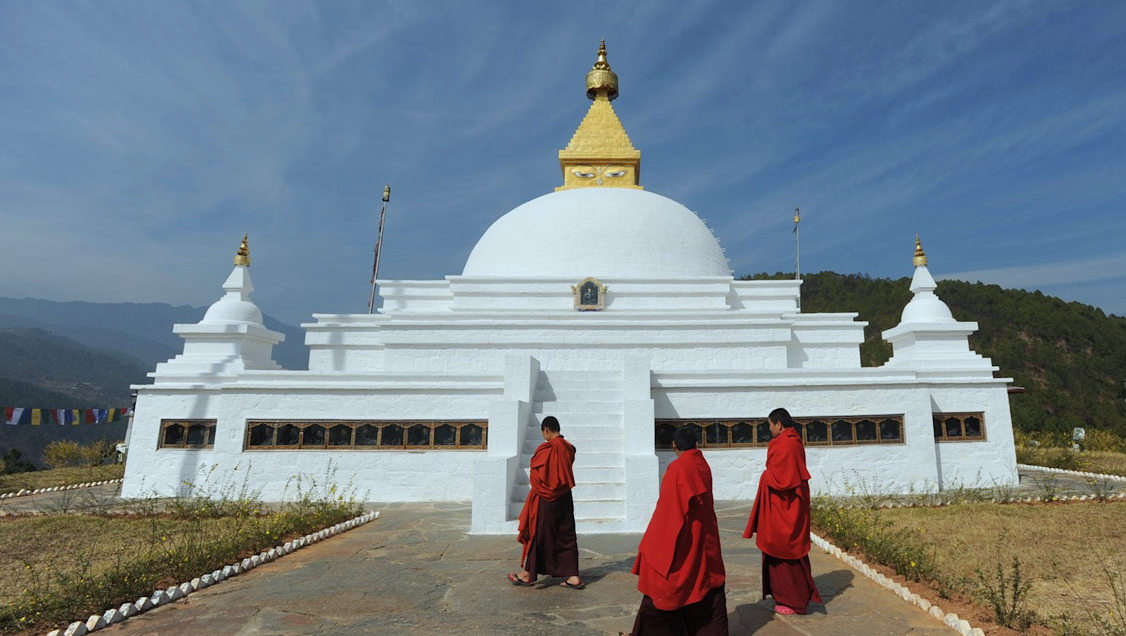
Sangchhen Dorji Lhuendrup Lhakhang Nunnery, perched atop a hill overlooking the Punakha Valley, is a tranquil haven of spirituality and serenity. This picturesque Bhutanese nunnery boasts stunning traditional architecture adorned with intricate artwork and colorful murals. Home to a community of dedicated Buddhist nuns, the nunnery offers visitors a peaceful retreat amidst breathtaking mountain vistas. Pilgrims and tourists alike come to Sangchhen Dorji Lhuendrup Lhakhang to soak in the spiritual ambiance, witness daily rituals, and enjoy panoramic views of the surrounding countryside.
Khamsum Yulley Namgyal Chorten
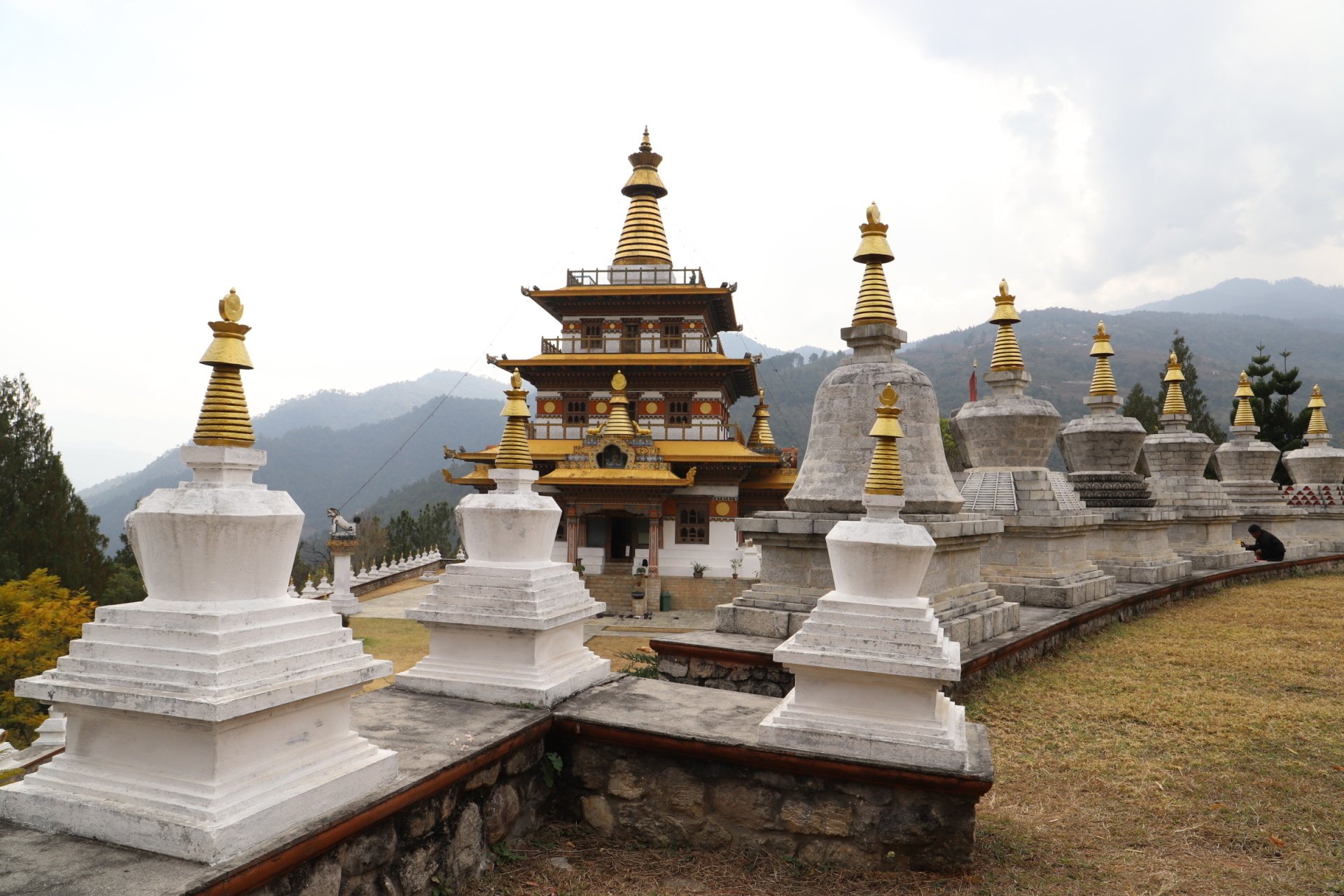
Khamsum Yulley Namgyal Chorten, perched majestically on a hilltop overlooking the Punakha Valley, is a breathtaking example of Bhutanese architecture and spirituality. Built to bring peace, stability, and harmony to the world, this stunning chorten offers panoramic views of the surrounding mountains and countryside. Visitors can embark on a scenic hike through the lush countryside to reach the chorten and marvel at its intricate artwork and serene ambiance. Khamsum Yulley Namgyal Chorten stands as a testament to Bhutan's rich cultural heritage and serves as a sacred sanctuary for contemplation and reflection.
Punakha Suspension Bridge
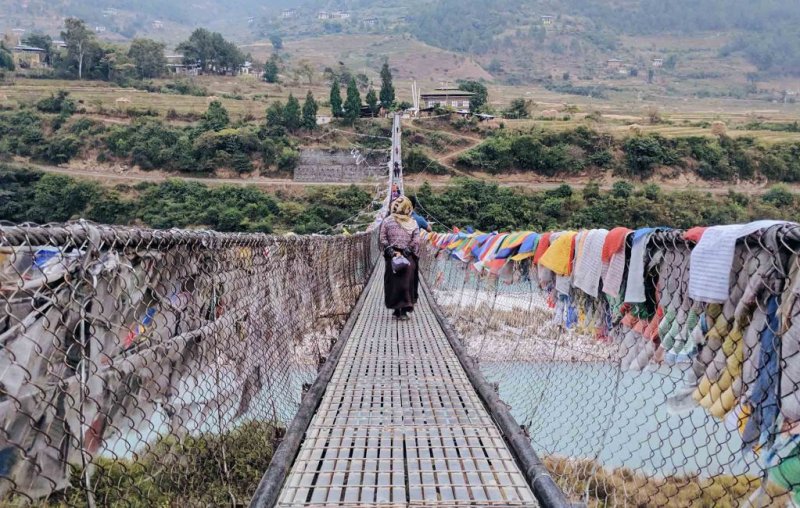
The Punakha Suspension Bridge, one of Bhutan's longest suspension bridges, spans gracefully across the Mo Chhu River, offering stunning views of the surrounding landscape. As visitors stroll across this iconic bridge, they are treated to panoramic vistas of the river below and the lush greenery of the Punakha Valley. The bridge's swaying motion adds to the thrill of the experience, making it a popular attraction for adventurers and nature enthusiasts. Crossing the Punakha Suspension Bridge provides a memorable opportunity to immerse oneself in the natural beauty and tranquility of Bhutan's breathtaking countryside.
Punakha Valley
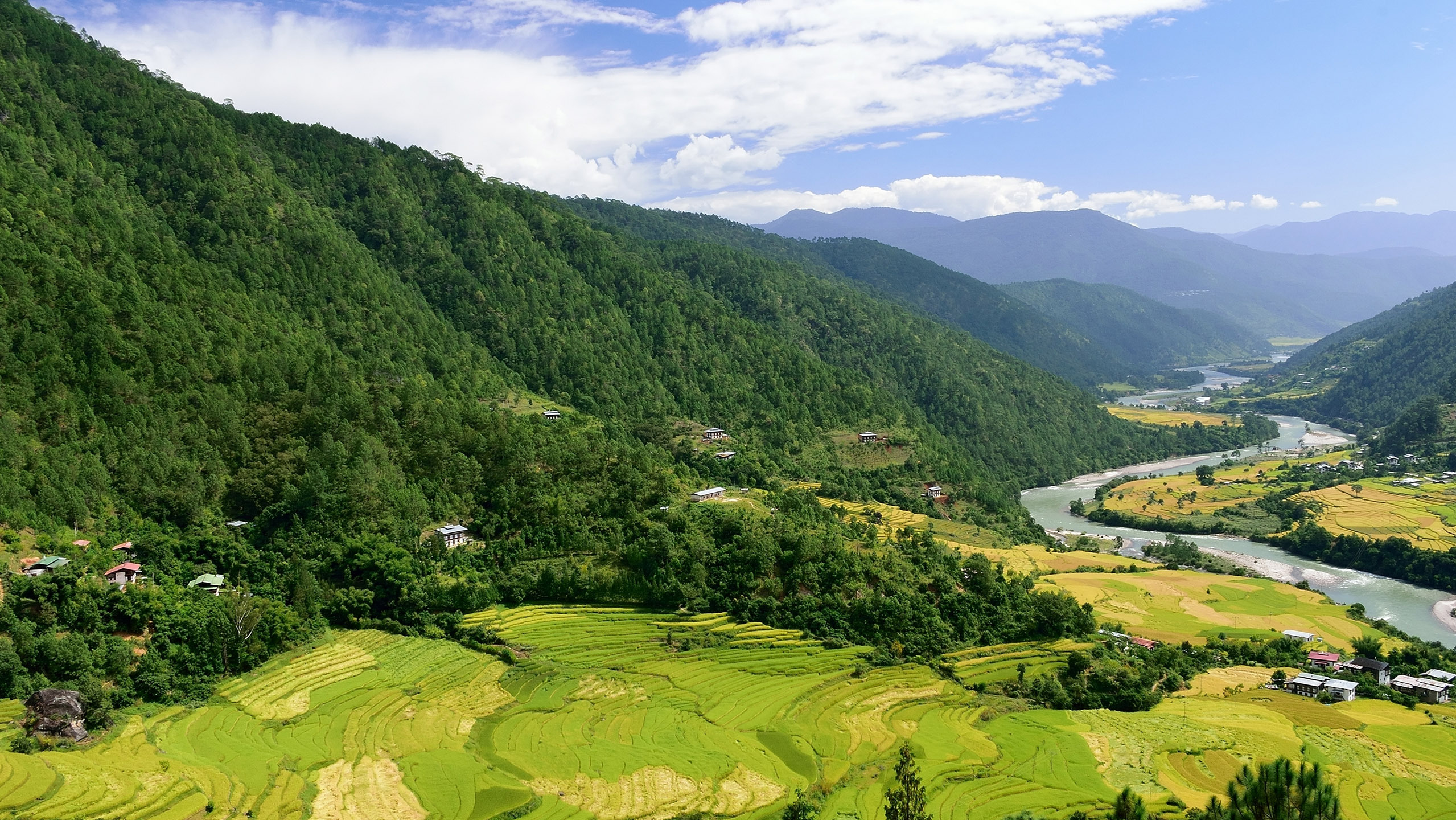
Punakha Valley, nestled amidst the majestic Himalayas, is a serene and picturesque destination in Bhutan. Known for its terraced rice fields, traditional Bhutanese villages, and tranquil rivers, the valley offers a captivating blend of natural beauty and cultural heritage. Visitors can explore charming villages, interact with friendly locals, and witness traditional farming practices in action. The valley's lush greenery, dotted with colorful prayer flags and ancient monasteries, provides a serene backdrop for leisurely walks, bike rides, and picnics. Punakha Valley is a true haven for nature lovers and cultural enthusiasts seeking an authentic Bhutanese experience amidst breathtaking scenery.
Rafting on the Mo Chhu River

Rafting on the Mo Chhu River offers an exhilarating adventure amidst the stunning landscapes of Punakha, Bhutan. With its crystal-clear waters and thrilling rapids, the Mo Chhu River provides an unforgettable experience for adventure seekers and nature enthusiasts alike. Guided rafting tours allow participants to navigate through exciting rapids, admire the scenic beauty of the surrounding valleys, and witness the rich biodiversity along the riverbanks. Whether you're a beginner or an experienced rafter, exploring the Mo Chhu River promises an adrenaline-pumping journey through some of Bhutan's most pristine and picturesque landscapes.
Talo Village
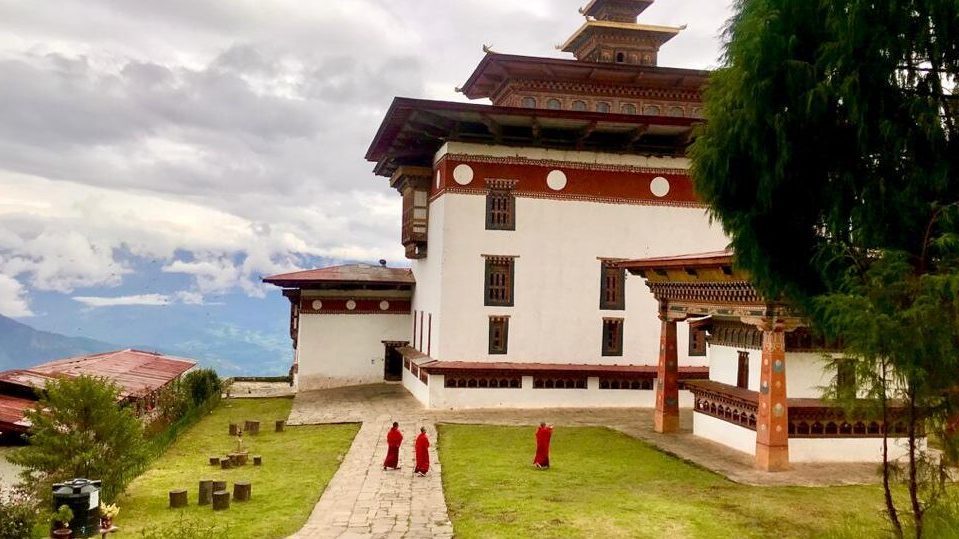
Talo Village, nestled in the picturesque Punakha Valley of Bhutan, exudes traditional charm and cultural richness. Surrounded by verdant hills and terraced fields, this quaint village offers a glimpse into rural Bhutanese life. Visitors can wander through narrow lanes lined with traditional Bhutanese houses adorned with colorful prayer flags and intricate woodwork. The village is known for its serene atmosphere, friendly inhabitants, and breathtaking views of the surrounding mountains. Talo Village provides a tranquil retreat from the hustle and bustle of city life, inviting travelers to immerse themselves in the timeless beauty and authentic culture of Bhutan.
Festivals of Punakha
Punakha hosts several vibrant festivals throughout the year, offering visitors a unique opportunity to experience Bhutanese culture and traditions. Some of the notable festivals celebrated in Punakha include:
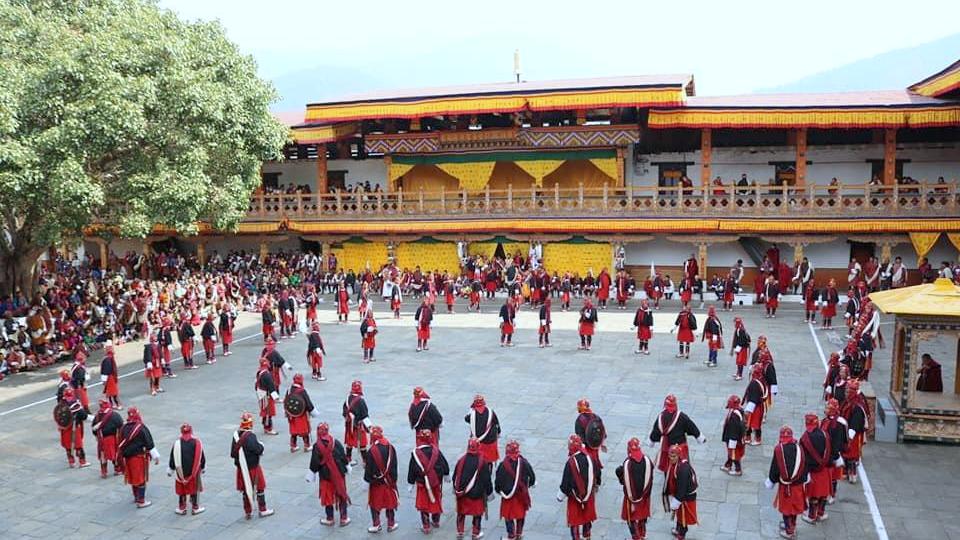
- Punakha Drubchen: This festival, held annually in February or March, commemorates the victory of Bhutanese forces over Tibetan invaders in the 17th century. The highlight of the festival is a reenactment of the battle scene inside the Punakha Dzong, accompanied by traditional masked dances and rituals.
- Punakha Tshechu: Celebrated immediately after the Punakha Drubchen, the Punakha Tshechu is one of Bhutan's most popular festivals. It features colorful masked dances, religious ceremonies, and cultural performances held in the courtyard of the Punakha Dzong. The festival honors Guru Rinpoche, the revered saint who introduced Buddhism to Bhutan.
- Drukpa Kunley Festival: Dedicated to Drukpa Kunley, the Divine Madman, this festival celebrates his unorthodox teachings and playful antics. Held annually in March or April, the festival features humorous performances, phallic symbols, and blessings for fertility and good fortune.
- Punakha Serda: This festival, celebrated in November, marks the end of the agricultural season and the harvesting of crops. Villagers gather at the Punakha Dzong to offer prayers for a bountiful harvest, accompanied by traditional music, dance, and feasting.
These festivals offer a fascinating glimpse into Bhutanese culture, spirituality, and community life. Visitors are welcome to join in the festivities, witness the colorful ceremonies, and immerse themselves in the rich traditions of Punakha.
Accomodation
Punakha offers a range of accommodation options to suit different preferences and budgets, from cozy guesthouses to luxurious resorts. Here are some popular accommodation choices in Punakha:
- Hotels and Resorts: There are several hotels and resorts in Punakha that offer comfortable rooms, modern amenities, and stunning views of the surrounding landscape. These establishments often feature on-site restaurants, spas, and recreational facilities for guests to enjoy.
- Guesthouses: For a more authentic experience, consider staying at a guesthouse in Punakha. These family-run establishments offer cozy rooms, home-cooked meals, and personalized hospitality, allowing guests to immerse themselves in Bhutanese culture and lifestyle.
- Farmstays: Experience rural life in Punakha by staying at a farmstay accommodation. These establishments offer rustic lodging on working farms, allowing guests to participate in agricultural activities, interact with farmers, and enjoy farm-fresh meals made with locally sourced ingredients.
- Campsites: For adventurous travelers, camping is a popular option in Punakha. Several campsites offer tented accommodation amidst the natural beauty of the Punakha Valley, allowing guests to sleep under the stars and wake up to breathtaking views of the mountains and rivers.
- Homestays: For a truly immersive experience, consider staying with a local family in Punakha. Homestays provide an opportunity to live with Bhutanese families, participate in daily activities, and learn about the local culture and traditions firsthand.
Whether you prefer luxury accommodations with modern amenities or a more rustic experience closer to nature, Punakha has something to offer for every type of traveler. It's advisable to book your accommodation in advance, especially during peak tourist seasons, to ensure availability and secure the best deals.
Cuisine
Bhutanese cuisine, with its unique flavors and hearty dishes, offers a delightful culinary experience for visitors to Punakha. Here are some traditional Bhutanese dishes to try during your stay:
- Ema Datshi: Considered Bhutan's national dish, Ema Datshi is a spicy stew made with chili peppers and cheese, typically served with red or white rice. The creamy texture of the cheese balances the heat of the chilies, creating a rich and flavorful dish.
- Phaksha Paa: This savory dish features tender strips of pork cooked with chili peppers, garlic, and other spices. Phaksha Paa is often served with rice or traditional Bhutanese bread, offering a satisfying and hearty meal.
- Momos: These delicious dumplings are a popular snack or appetizer in Bhutan. Made with a variety of fillings, such as meat, vegetables, or cheese, momos are steamed or fried and served with dipping sauces for added flavor.
- Red Rice: Bhutanese red rice, known for its nutty flavor and chewy texture, is a staple in Bhutanese cuisine. It is often served alongside main dishes or used in traditional Bhutanese dishes like Ema Datshi and Phaksha Paa.
- Suja: Suja, or butter tea, is a traditional Bhutanese beverage made with tea leaves, yak butter, and salt. It is often served as a welcoming gesture to guests and is believed to have warming properties, making it a popular drink in the chilly mountain regions of Bhutan.
- Jasha Maroo: This aromatic chicken dish is flavored with ginger, garlic, onions, and a blend of spices. Jasha Maroo is typically served with rice or Bhutanese noodles, offering a comforting and flavorful meal.
- Red Rice Wine: Known as ara, this traditional Bhutanese alcoholic beverage is made from fermented red rice and is often served during festivals and celebrations. It has a slightly sour taste and is enjoyed by locals and visitors alike.
These are just a few examples of the delicious cuisine you can enjoy in Punakha, Bhutan. Be sure to sample these traditional dishes and explore the rich flavors and culinary traditions of this enchanting Himalayan kingdom.
Essential Tips
Here are some essential tips to make your visit to Punakha, Bhutan memorable and hassle-free:
- Respect Local Customs: Bhutan is a deeply traditional and spiritual country. Respect local customs and traditions by dressing modestly, removing your shoes before entering temples, and refraining from taking photos inside religious sites without permission.
- Altitude Consideration: While Punakha is at a lower altitude compared to other parts of Bhutan, some visitors may still experience mild altitude sickness. Take it easy upon arrival, stay hydrated, and consider acclimatizing gradually if you're coming from lower elevations.
- Pack Accordingly: Be prepared for varying weather conditions, even within a single day. Pack layers, including warm clothing for cooler evenings and mornings, as well as rain gear and sturdy shoes for outdoor activities.
- Currency: The currency used in Bhutan is the Bhutanese Ngultrum (BTN). Indian Rupees are also widely accepted in most places. It's advisable to carry a mix of cash and cards, as ATMs may not be readily available in remote areas.
- Travel Permits: Ensure you have the necessary permits before traveling to Punakha. Foreign tourists must book their trip through a licensed Bhutanese tour operator who will arrange the required permits for you.
- Photography: Ask for permission before taking photos of people, especially monks and locals. Photography inside religious sites may be restricted, so always inquire beforehand.
- Responsible Travel: Help preserve Bhutan's pristine environment and cultural heritage by practicing responsible travel habits. Respect wildlife and natural habitats, dispose of waste properly, and support local businesses and artisans.
- Stay Hydrated: The mountain air can be deceptively dry, so remember to drink plenty of water, especially if you're engaging in outdoor activities or trekking.
- Language: While English is widely spoken in tourist areas, learning a few basic phrases in Dzongkha, the national language of Bhutan, can enhance your cultural experience and interactions with locals.
- Enjoy the Moment: Finally, take time to soak in the beauty and tranquility of Punakha. Slow down, appreciate the stunning landscapes, and immerse yourself in the unique culture and spirituality of this enchanting destination.
By keeping these essential tips in mind, you'll be well-prepared to enjoy a memorable and enriching experience in Punakha, Bhutan.
As we conclude 'Discovering Punakha: A Comprehensive Travel Guide, Amen Bhutan Tours and Treks extends our heartfelt gratitude for allowing us to be part of your Punakha adventure. We hope this guide has inspired and empowered you to explore the wonders of Punakha with confidence and curiosity. Whether you're drawn to the ancient fortresses, tranquil valleys, or vibrant festivals, may your journey be filled with unforgettable experiences and cherished memories. As you bid farewell to Punakha, remember that the spirit of Bhutan's beauty and hospitality will remain in your heart forever. Until we meet again on another enchanting journey, travel safely and may the blessings of the Himalayas guide your path
Frequently Asked Questions
Q: What is the best time to visit Punakha, Bhutan?
A: The best time to visit Punakha is during the spring (March to May) and autumn (September to November) months when the weather is pleasant and skies are clear.
Q: How do I get to Punakha from Paro Airport?
A: From Paro Airport, Punakha is approximately a 4-hour drive away. You can arrange for transportation through your tour operator or hotel.
Q: What are the must-visit attractions in Punakha?
A: Some must-visit attractions in Punakha include Punakha Dzong, Chimi Lhakhang, Khamsum Yulley Namgyal Chorten, and the Punakha Suspension Bridge.
Q: What types of accommodation are available in Punakha?
A: Accommodation options in Punakha range from hotels and resorts to guesthouses, farmstays, and campsites, catering to various preferences and budgets.
Q: Are there any festivals or events in Punakha?
A: Punakha hosts several festivals throughout the year, including Punakha Tshechu, Punakha Drubchen, and the Drukpa Kunley Festival, offering visitors a unique glimpse into Bhutanese culture and traditions.
Q: What should I pack for a trip to Punakha?
A: It's advisable to pack layers of clothing, including warm attire for cooler evenings, rain gear, sturdy shoes for outdoor activities, and sunscreen and sunglasses for sun protection.
Q: Do I need a permit to visit Punakha?
A: Yes, visitors to Punakha, like other parts of Bhutan, require a permit. This can be arranged through a licensed Bhutanese tour operator.
Q: What are some popular activities to do in Punakha?
A: Popular activities in Punakha include trekking, rafting on the Mo Chhu River, visiting monasteries and temples, exploring the Punakha Valley, and experiencing local culture and cuisine.
Q: Is it safe to travel to Punakha?
A: Yes, Punakha is generally a safe destination for travelers. However, it's always advisable to exercise caution and follow local customs and regulations.
Q: What is the currency used in Punakha?
A: The currency used in Punakha, as in the rest of Bhutan, is the Bhutanese Ngultrum (BTN). Indian Rupees are also widely accepted.
If you are looking for tour packages in Bhutan please click here
If you need any further information, please contact us, Email: at [email protected] , Phone (Whatsapp or Viber) +975-1755-6636
